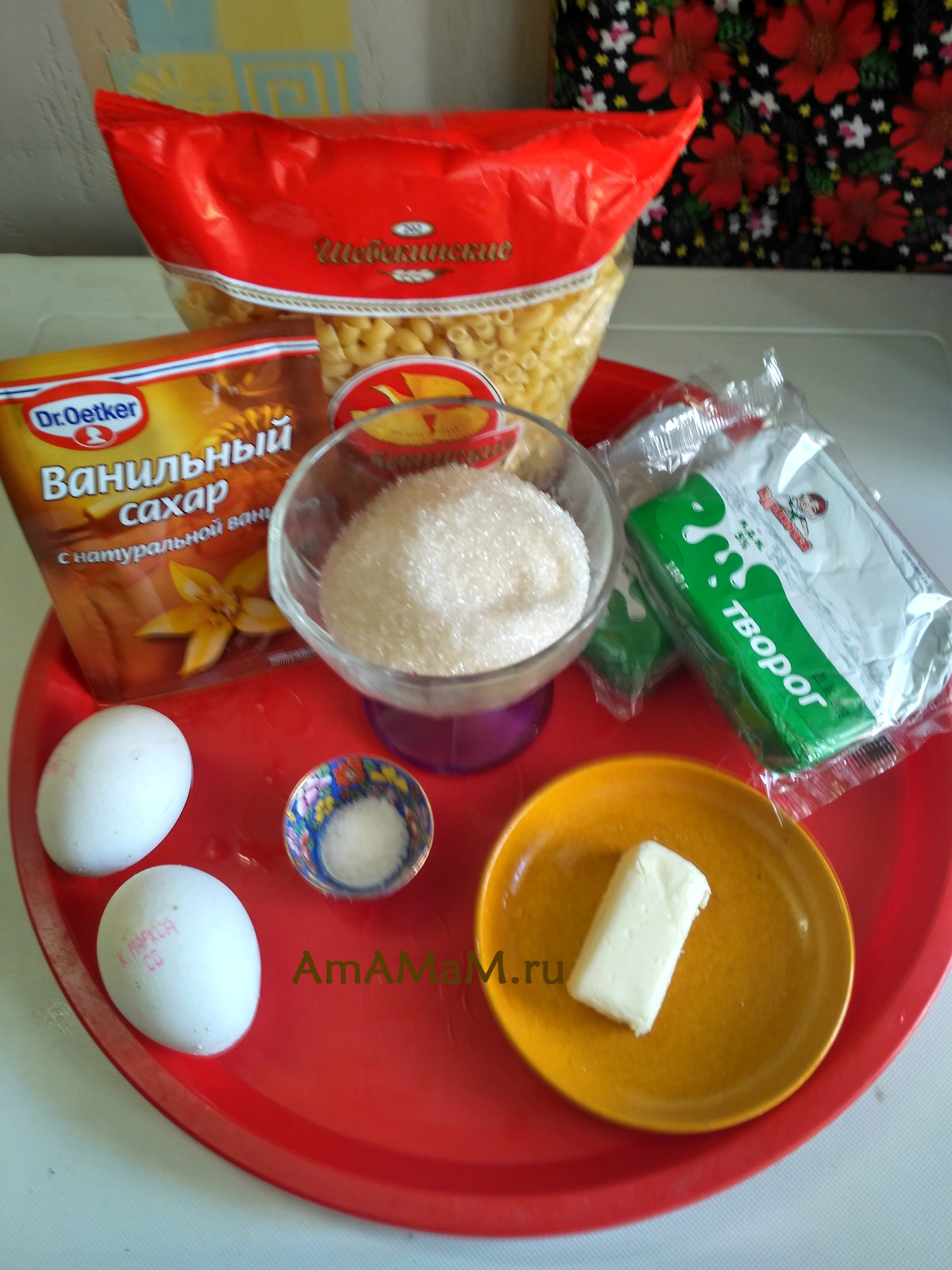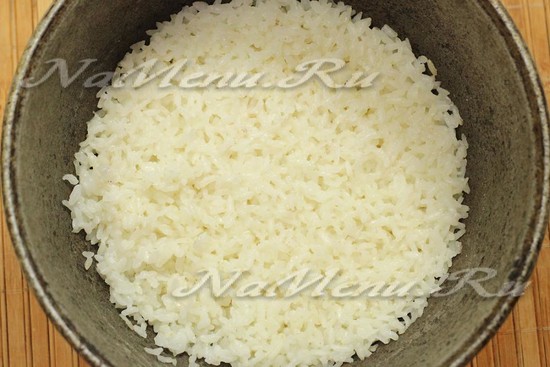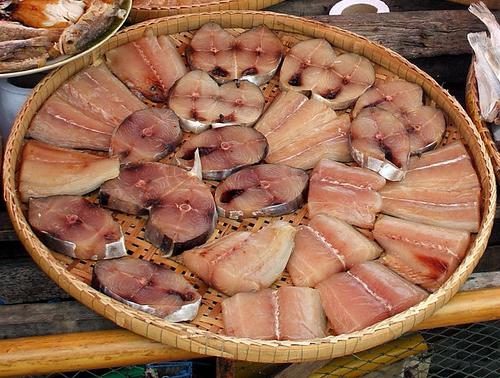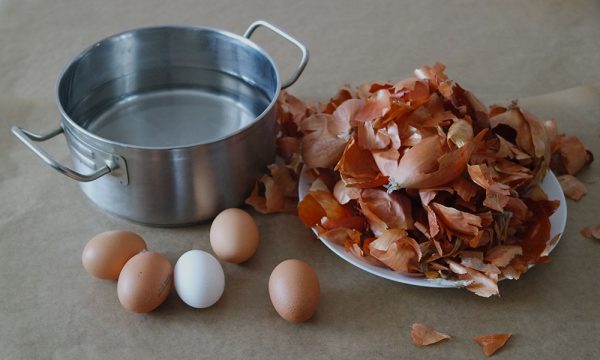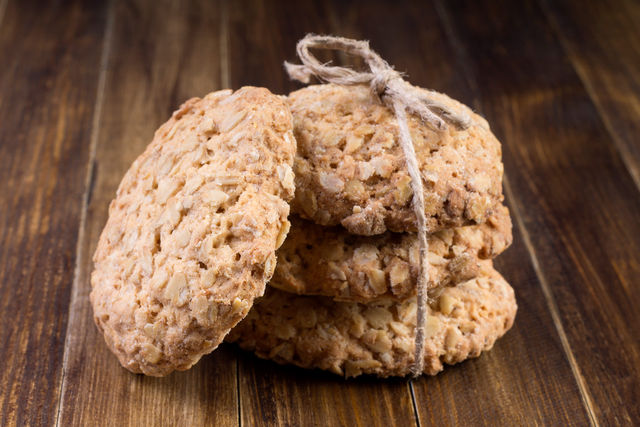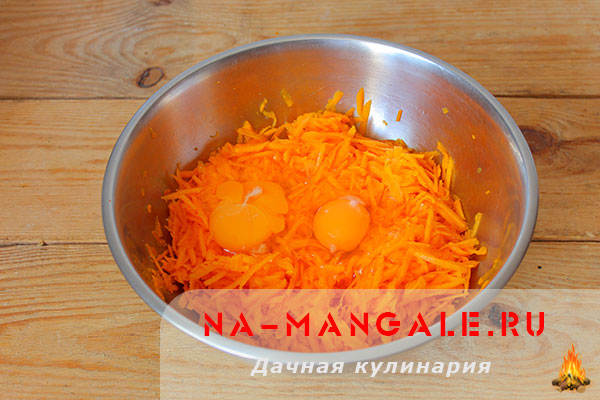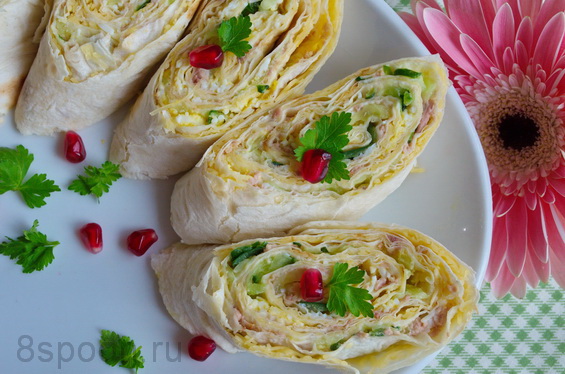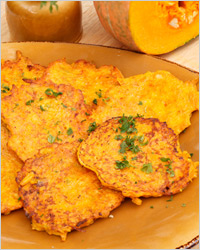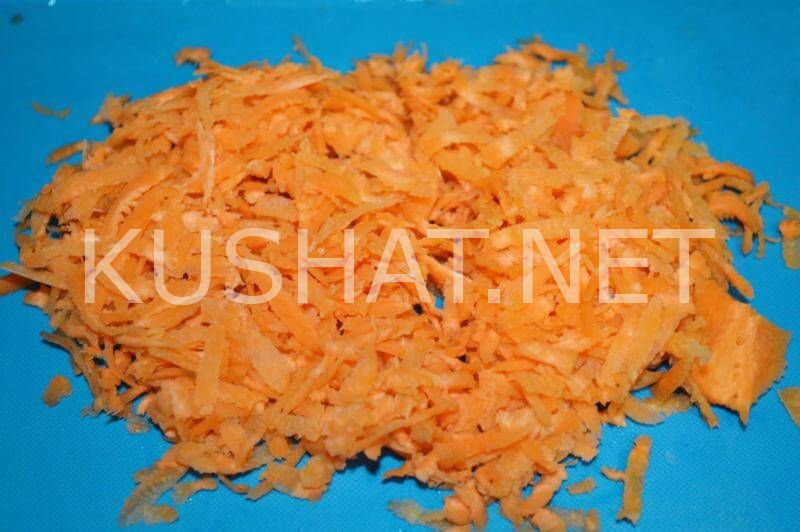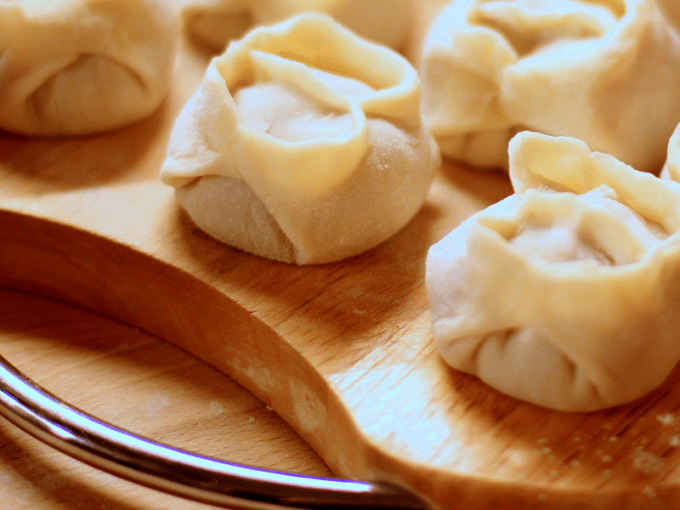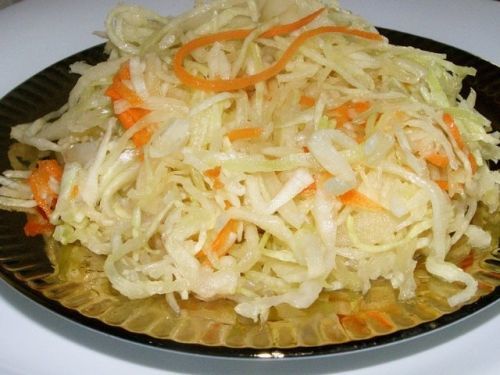Hungarian food The most delicious and unusual dishes of Hungarian cuisine
The national cuisine of Hungary is associated with goulash, paprika, salami and Tokai wine. But believe me, the real Hungarian menu is much more interesting and richer. Some experts put this kitchen in third place in the world, after France and Italy. Due to the great variety, excellent taste, satisfying dishes and the skillful use of different seasonings, Hungarian cuisine has become famous far beyond the borders of the country. Therefore, if you happen to be in Hungary, bypass chisburgers, hamburgers and other fast foods, and be sure to try real Hungarian dishes. And now, in a little more detail, about the most famous delicacies of Hungarian cuisine.

Of course, the famous dish is considered the most popular. hungarian goulash. For its excellent taste, sometimes, this dish is called - "peasant royal soup." In the city of Gyula, there is even a whole restaurant with an intriguing name - "Goulash Academy". Here you will be offered more than 30 recipes for this famous dish. Moreover, the main secret is that they cook it in this restaurant, in the open air, in a picturesque garden. This is done so that the goulash soaks up not only the amazing harmony of spices, but also the exquisite aroma of Hungarian air. Despite the fact that goulash is far from a dietary dish, locals believe that it cures many diseases and relieves stress.

Goulash itself, is a cross between meat stew and thick soup, therefore, it can be used both as the first and the second. Hungarian shepherds invented the dish and the name comes from the Hungarian word "guiyash", which means "shepherd" in translation. And in the city of Szolnok, the annual "goulash festival" takes place, to which the best chefs of the country come and compete in the preparation of this amazing dish.

I present to you a few more dishes, Hungarian cuisine, which are worth trying in this hospitable country:
- « chicken paprikash« - It is prepared from white chicken meat, with the addition of sour cream, mushrooms, tomatoes, onions, garlic, dry white wine and red paprika.
- « venison goulash soup« - served in a pot of freshly baked bread.
- « turosh chusa « - boiled noodles with sour cream, cottage cheese and greaves.
- « hungarian lecho « - It is prepared from tomatoes, paprika, onions, smoked pork sausage and served with dumplings.
- « halasle « - Hungarian ear of river fish.
- « fazelok « - Hungarian stewed vegetable stew.
- « kerezet « - Sheep cheese paste with spices.
- « cabbage rolls in transylvanian« - in which, in addition to minced meat, add fried brisket, smoked meat and sausages.
- « virgin roast« - a milk pig stuffed with minced pork ham.
- « heranian tokan"- a dish of stewed pork kidneys, meat, mushrooms, bacon, onions, paprika, flour, sour cream and marjoram.
- "Palazzinta" - pancakes with various fillings.
- “Tolotti paprika” - large red peppers stuffed with minced meat and rice, stewed in tomato sauce.

It is impossible to imagine the cuisine of Hungary without paprika. This is a capsicum that was brought into the country by the Turks in the 16th century. Unripe, green, pods are used to make side dishes and salads. Of the mature, red, make seasonings. There are many flavors of Hungarian paprika - spicy, sweet, fiery, pink and others. In the south of the country there is the city of Kalocha, which is considered the world capital of paprika. Here is located, popular with tourists, the Paprika Museum. Many hundreds of ruby-pomegranate pods hang on medieval beams, the fragrance of which is impossible to forget.

A lot of pleasant surprises, Hungarian cuisine, will offer for dessert. Already, a kind of brand of the country, has become " hungarian strudel« , stuffed with nuts, cherries, poppies, apples, pears. The main feature is the preparation of dough from a special flour, with a high content of gluten. The shops even sell a special "strudel flour." In addition, you should try such sweet dishes as:
- « pancakes a la Gundel"- with sour cream and dried fruits, abundantly doused with chocolate.
- « chomloy dummy"And" dobosh "- national Hungarian cakes.
- “Rigo yanchi” and “esterhazy” are amazing Hungarian pastries.
- “Kyurtyoshkalak” - traditional baking of cylindrical shape.

Another famous brand of Hungarian cuisine is Tokaj wine. Hungarians are very proud of their amber-golden wine, with a unique spicy flavor. Experts believe that Tokai wine has a unique rich taste, with a touch of fire. At one time, Peter the Great bought several vineyards in Hungary, from which wine was delivered to his royal table. In addition, it is worth tasting the famous Hungarian apricot vodka, the unique Badachon wine (“ Kekniel "and" Auvergne "), herbal balm “Unicum”, beautiful Balaton wine from Shomlo vineyards and white wines of Kecskemét ( Kecskeméti Leanka"And" Debray Harschevelu«).
Welcome to hospitable Hungary and bon appetit to all!


Local snacks themselves are quite satisfying and can replace the whole lunch. If you want to enjoy the taste of several dishes and leave room for a second and soup, then order a couple of different snacks based on: 1 serving for the whole company. Ask each guest a clean plate and start tasting. What Hungarian snacks should I look for?
Toltott paprika - stuffed paprika. Large red peppers, skillfully stuffed with a delicate mixture of rice and minced meat and stewed in a thick tomato sauce;
Rantott libamajszeletek - fried goose liver. An amazing dish, which is thin, fried in breading from flour and eggs, pieces of the liver, melting in the mouth and having an unrivaled taste. The highlight of this recipe is that the liver is fried over moderate heat and it retains its juiciness and an appetizing pale pink hue. As a rule, a liver prepared in this way is offered in combination with boiled friable rice and ripe juicy tomatoes;
Palacsinta - crepes. Hungarian cuisine is replete with pancakes of all kinds. They can be either stuffed or simply seasoned. Start with the traditional ones - Hortobagui palacsinta, flavored with meat goulash, sour cream and paprika, and continue with Juhas palacsinta, stuffed with tender curd with the addition of fresh dill.
Second courses in Hungary
The basis of the second Hungarian dishes is also meat (beef and pork), paprika, onions and lard. It would seem that almost the entire kitchen is based on goulash - liquid, thick or heavy, however, in fact, the Hungarians are able to season the same types of meat, so skillfully using different herbs and additives, that their taste is radically different and always magnificent. The meat is cooked as a lump method, and in the form of minced meat, from which the most tender, dumpling or cutlets melting in the mouth are obtained. For meat dishes, as a rule, various kinds of salads and pickled vegetables are offered: cucumbers, sauerkraut, onions and paprika. Some restaurants serve salad mix for a large company, do not use it and try the whole kaleidoscope of vegetable flavors in Hungarian. Pickled vegetables, along with meat and paprika, form the basis of the menu of the second Hungarian dishes. Which of the rich assortment of main dishes should definitely be tried?
Porkolt - goulash. A truly Hungarian dish, which is finely chopped meat stewed in wine and tomato sauce, seasoned with onion dressing and spices. Depending on the orientation of the restaurant’s cuisine, you may find several varieties of goulash on the menu. The most commonly offered beef goulash is Marha porkolt. It is followed by: pork - Sertes porkolt and mutton - Birka porkolt. There is a recipe for this amazing dish for vegetarians - Gomba porkolt (mushroom goulash). To such a meat or mushroom dish, as a rule, dumplings or dumplings are offered - Tarhonya;
Paprikas - Paprikash. Another traditionally Hungarian national dish, which is fried meat, flavored with fresh sour cream sauce and a generous layer of paprika. In me you can observe two variations of this dish: Borju - veal paprikash and Csirke - chicken paprikash. Both of them are worthy of attention, although they differ radically in taste;
Lecso - lecho. Another legendary local food, the love of many vegetarians. The main components of lecho are: paprika tomatoes and onions. The main secret of the recipe lies in long and moderate stewing of vegetables - until the liquid and natural juices are completely evaporated. Initially, lecho served as a side dish for goulash, but now it serves as an independent dish, delighting lovers of vegetable and light cuisine with its amazing taste;
Brassoi apropecsenye - pork roast. Many restaurants offer this dish, which is one of the leaders in orders of meat dishes. Roast includes fried juicy pieces of pork and potato, stewed in an onion-tomato mixture;
Budapest modra - meat in Budapest. This dish is based on minced meat and is a cutlet of beef, veal or pork, fried with the addition of yellow cheese and mushrooms. Before scrolling to mincemeat, the meat is pickled in tomato sauce and herbs, which gives the cutlets an exquisite taste and delicate aroma;
Csusza - baked pasta according to an unusual recipe for us. An independent dish that does not include meat, a favorite food of local vegetarians and pasta fans. Pasta is baked in a special bowl with the addition of milk and additional ingredients. Tourists are advised to choose the following types of baked pasta: Makoscsusca - with poppy seeds, Turoscsusza - with fresh cottage cheese, Dioscsusza - with crushed walnuts;
Gomboc - dumplings. A traditional national dish that conceals balls of dough or so-called dumplings, which can be either lean, with the addition of meat or even fruit filling. Depending on the recipe, dumplings in restaurants can be served as a side dish for meat dishes, as an independent dish, and even as a sweet treat.
Hungarian desserts
Locals love desserts, so, as a rule, every meal ends with some wonderful treat. Some of them are a little more detailed:
Vegyes Reres - Roll. The most popular Hungarian dessert, which can be found in every restaurant, cafe or culinary. This is a pastry made from the most delicate French pastry, filled with sweet curd filling with the addition of poppy seeds, ground nuts, cherries, apples and raisins. To some extent, the roll can be compared with the Viennese strudel, but the Hungarian version is even more magnificent;
Gundel palacsinta - sweet pancakes. The delicacy was invented by the famous Hungarian chef, and forever went down in the history of dessert national cuisine of the country. Thin lace pancakes are abundantly stuffed with a mass of dried fruits and sour cream, and on top the treat is generously poured with hot chocolate and alcohol tincture. Traditionally, such a dessert is served burning. As you understand, this effect is created by flaming alcohol on top. However, these days such a spectacular presentation is not present in all restaurants. Nevertheless, Gundel palacsinta remains a favorite treat for both locals and visitors;
Somboi galuska - mini biscuit cakes. Dessert involves a fluffy fresh biscuit, cut into miniature pieces, garnished with whipped cream and sprinkled with grated chocolate. Sweeteners go crazy with the melting taste of this Hungarian treat.
Hungarian drinks
First of all, enjoy the real famous Tokayskoye wine. Its taste is unsurpassed, and the taste drives even capricious gourmets crazy. This is not at all surprising, for Budapest is the birthplace of Tokai wine. In Hungary, this type of wine is present in the wine list or menu of any restaurant, bar or cafe. In the Tokay fortress, it does not exceed the standard framework and contains the traditional 16% alcohol.
Along with Tokai wines, Hungary is famous for other varieties: Sopron, Eger and Villan. If you want to not only taste local wines, but also buy them for home consumption, choose restaurants at wine cellars or factories. There are a lot of such establishments here. As a rule, here you can enjoy traditional Hungarian dishes, try many types of wines, and immediately buy your favorite varieties - they will be brought to you from the cellar or poured from a barrel. Tourists do not leave the country without a couple of liters of their favorite wonderful grape drink.
The low alcohol list of Hungarian drinks is represented by several beers made by local factories. The following varieties deserve attention: "Soproni", "Dreher", "Bak", "Kebanai", "Aranyasok".
Of the stronger drinks, you can recommend the fruit palinka or Unicum balm - a tincture containing the juice of 40 herbs and sold in colorful round black bottles with a bright red cross on the label. Another interesting of strong drinks is Hubertus hunting tincture, which has a sweet herbal flavor and a high degree of strength. The most hardy of Hungarian hunters interfere with beer, getting a cocktail called “Magyar Ruff”, but you should not get so excited - it is better to try these drinks separately, savoring every drop of amazing Hungarian elixirs.
There are no tasteless dishes in Hungary - you can try whatever you want. Of course, most of them are high-calorie and fatty, but they are environmentally friendly and delicious. And is it worth it to restrain oneself in culinary desires if the calories eaten melt quickly during bathing in mineral springs and walking in picturesque surroundings ?!
Typical dishes for national Hungarian cuisine are those that use a large amount of ground paprika, onions, tomatoes and green bell pepper. The most popular meat here is pork, the most common vegetable is cabbage. Among the delicacies, it is worth highlighting goose liver pate and chicken paprikash.
It is impossible to imagine Hungary without such national dishes as:
1. Traditional goulash - beef soup stewed with onions, cabbage, potatoes and tomatoes.

2. cooked from finely chopped chicken meat, which is fried with onions, sweet peppers, paprika, garlic and broth. Sour cream is added to the finished dish.

3. Not less popular Turos Chusa - boiled noodles, in which sour cream, cottage cheese and greaves are added.

4. Hungarian fish or lake fish ear is called Phaselek.

5. Virgin roast prepared from a milk pig, which is stuffed with chopped pork ham.
Traditional Hungarian cuisine can also offer many interesting dishes for dessert. Strudel has also become almost traditional here. As a filling in Hungary use nuts, poppy seeds, cherries, pears or apples. The most popular local cakes are the Shomloy dumpling and dobosh. Having seen such a Hungarian dish as kurteshkalach in the menu of one of the restaurants, one should not be surprised, as this is just a traditional dessert of a cylindrical shape.

Among the traditional and most popular drinks in Hungary, Tokai wine is worth highlighting. Hungarians are proud of its amber-golden color and its unique spicy taste. Among the stronger spirits, apricot vodka, Unicum herbal balm and Kecskemét white wines are popular.
When you travel to Budapest, do not forget to try delicious Hungarian dishes. Hungarian cuisine will certainly appeal to you. After all, her kitchen consists mainly of hearty soups, stews, game dishes, simple but tasty casseroles, juicy pies and pastries.
Here we give you some tips on what foods to try while in Budapest.
Hungarian dishes are rich and spicy with some ingredients and a specific cooking method. The main ingredient is paprika powder, which gives a unique taste and bright orange color to typical Hungarian dishes. But do not be mistaken that red pepper dishes are too spicy.
For the most part, sweet paprika is placed in stews, goulash, chicken with paprika and hot pepper are usually located on the side.
The main step in creating a real Hungarian stew, goulash is stewing onions in hot bacon with the addition of paprika. Sour cream is also another important ingredient in Hungarian recipes. It is added to soups, pastas, casseroles and desserts.
There are also other main ingredients, for example, onions, garlic, caraway seeds, black pepper and various herbs, including parsley, bay leaf, wormwood, celery, thyme, savory.
Although most Hungarian dishes require lard, restaurant owners and housewives currently use vegetable oil instead of pork fat.
Hungarian soups
It is the nation that consumes soup the most in its diet. A full three-course dinner always starts with soup. It can be a hearty meat soup, world famous goulash or a sweetish vegetable soup.
Each part of Hungary has its own way of making goulash. Green beans are added to dishes called "Palócgulyás" goulash and "Alfoldi" goulash, and then they are cooked with potatoes, carrots and parsnips. Hearty bean soups are very popular in Hungary.

In restaurants you can find in the menu "Jókai" - bean soup. Be sure to try the famous "fish soup" in Hungary.

Also, you will find in the menu of the restaurants another Hungarian soup - "Újházy", that is, chicken broth.
The price varies depending on the order, approximately 400-1000 Hungarian forints.
Hungarian main dishes
After the soup, they usually serve a meat dish with potatoes, pasta or rice side dish. Meat dishes can also be served with pickles or seasonal vegetables.
The most popular meat dishes are Pörkölt and paprikás. Pörkölt is a stew made from pork, beef, lamb or chicken with onions and the main Hungarian spice - paprika powder.

Paprikás is prepared in the same way as pörkölt. The only difference is that sour cream is mixed with red paprika and onion sauce. This is necessary to give the dish a creamy appearance.
Roast goose liver ("Libamáj") and game dishes are considered Hungarian specialties.

Cabbage rolls ("Töltött Káposzta") is a traditional Hungarian dish, very tasty. It is prepared for holidays such as Christmas and Easter.

Hungarian cuisine is characterized by pasta dishes. There are a number of such dishes: "Turos csusza" - pasta with cottage cheese, "káposztás tészta" - egg squares with stewed cabbage and, of course, spicy pasta.
Sweet pasta dishes: "túrógombóc" - dumplings, cheesecakes, "szilvásgombóc" - plum dumplings and "palacsinta" - pancakes.
If you are a vegetarian, try "Főzeléks" - these are stewed vegetables in a thick form in water. Try also "tökfőzelék" - a brain with dill and sour cream, or "finomfőzelék" - a mixture of vegetables with white sauce.
Restaurants usually serve braised pork chop or scrambled eggs. It depends on which mix of Főzelék vegetables you have chosen. For some Főzeléks, for example, for Babfőzelék, in which beans are added, smoked meat or sausage is important.

If you are a vegetarian who adheres to the rules, then before ordering "főzelék" you can ask the waiter if you used meat, or even meat broth, during its preparation.
The price of such dishes: between 1200-3000 forints, depending on the restaurant. Some restaurants may even raise prices for tourists.
Hungarian pastries, cakes, snacks
For lovers of sweets, it is impossible not to ignore Hungarian sweets: juicy cakes, delicious pastries. The best places to try these sweet goodies are coffee shops and cafes. Take your time with the choice of cakes and pies with cream filling, which are displayed row by row behind the counter of shops. Here are some desserts you can try:
"Dobos Torta" - a multi-layer cake with thick chocolate cream, covered with crispy caramel.

"Eszeteházy Torta" - a multi-layer cake with hazelnut cream.
"Krémes" is a lightweight vanilla cream that is used between two layers of crispy puff cake.

"Rigó Jancsi" - chocolate sponge cake filled with airy chocolate mousse and coated with chocolate.

"Rákóczi Turos" - curd cake.
Buns - "Retes" - puff pastry with various fillings (cottage cheese, apple, poppy and cherries and others). For Hungarians, these dishes are favorites.
As a rule, Kürt мероприятияs kalács is sold at festivals and events in the open air - a hollow dough of cylindrical shape covered with powdered sugar, cinnamon or walnuts.

"Gesztenye püré" - chestnut puree or "Somlói galuska" - puff pastry sponge cake with chocolate sauce, rum and whipped cream are typical hearty Hungarian desserts.
For a quick morning snack, you can try fresh pastries from the bakery, for example, "Turos taška" - cookies filled with cottage cheese, or "Kakos Csiga" - "coconut snail" - a ball-shaped dough filled with chocolate. In food departments in vegetable markets, you can buy "Langos" - deep-fried round dough.
Another option for a quick bite is Pogácsa, a savory biscuit with a variety of flavors (cracklings, cheese, cabbage).

The price of these dishes: pastries and snacks cost about 150-200 forints, a piece of cake - between 200-400 forints (in a cafe for tourists they cost more).
Hungarian cuisine, national and local: what to cook and where to eat. Recipes, cooking methods, snacks, desserts, hot dishes and drinks in Hungary.
- Hot tours to Hungary
- May Tours around the world
Even those who are not adherents of gastronomic tourism, it is worth including in the program of a trip to Hungary a close acquaintance with the cuisine of this country. Hungarian cuisine is distinguished from other European dishes by the huge variety of products used.
Products
If we talk about meat dishes, then they can be prepared from pork, piglet, beef, veal, game, poultry. Some dishes use different types of meat or meat processed in different ways. Rivers and lakes of the country are rich in fish of various species, therefore dishes from the Danube catfish, Tissay sterlet, Balaton pike perch occupy an important place in national cuisine. Various vegetables are also used: eggplant, zucchini, tomatoes, various cabbage and - as the most important components of many dishes - onions and bell peppers.
Sour cream in combination with the most unexpected ingredients is often used for seasoning. It cannot be said that Hungarian flour is traditionally used for the preparation of flour products. Its peculiarity lies in the high content of gluten, which allows you to roll out the dough very thinly and make baked goods, which has no analogues in the kitchens of other countries. Often, dough for tarragon is prepared from flour kneaded on eggs - small dried balls that are used both independently and in the form of a side dish or filler for stuffed vegetables.
Cooking methods
The main methods of processing products are cooking, stewing, frying. It doesn’t look as picturesque as grilling, but the taste of the finished dishes is excellent! Of course, every cook has his own secrets and technological methods that make it possible to prepare a delicious and beautiful dish. But there are common points that, in fact, create that unique taste that is inherent in dishes of Hungarian cuisine. One of these features is the widespread use of lard. It is an important component of most dishes, sometimes it fry flour and spices, which are part of the recipe - this gives the dishes the necessary density and pungency. Hungarian culinary experts consider butter to be a dietary product and are very rarely used in their recipes. Vegetable oil is even less commonly used; even in vegetable salads, it is usually replaced by ghee.
The second important feature is the use of spices and seasonings. Onions, garlic, cinnamon, celery, dill, black and red pepper, marjoram, thyme, caraway seeds and, of course, red pepper - paprika are especially popular. There are many different varieties, degrees of maturity and methods of applying paprika. Fruits can be used ripe, half-ripe, fresh, dried, crushed ... To this we must add a rich color scheme: green, light yellow, pink, light red, burgundy pepper pods also serve as table decoration. Varieties of taste are added by onions, which are used very widely, moreover, after various heat treatments. It is interesting that for some dishes it should be barely browned in a pan, and for others it should be very fried.
What to try
Separately, it must be said about the names of the dishes. There is some confusion: the second dish, which is called goulash in Russia, is called maslyash in Hungary, and ghulash is a very thick spicy soup made of meat and mashed vegetables, prepared with a lot of flour and paprika. And the first name that comes to mind when mentioning Hungarian cuisine is paprikash. This funny word refers to almost any dish seasoned with sour cream sauce with paprika.
Perekelt - stew - differs from other dishes in its high onion content, prepared from beef, veal, pork, lamb, poultry and offal. Tokan - resembles a reliquette and goulash, but put less meat in this dish than in goulash, but add mushrooms, green peas and greens. Separately, it should be said about flour dishes. Noodles with cottage cheese, various rolls, sweet and not sweet, the famous Hungarian cheesecakes - the variety is very large.
Rivers and lakes of the country are rich in fish of various species, therefore dishes from the Danube catfish, Tissay sterlet, Balaton pike perch occupy an important place in national cuisine.
Hungarian wines
Speaking about Hungarian wines, one cannot help but mention the wine Voltaire said: “Tokai amber blessed tickles the brain and gives thought to the fire necessary for the witticisms as bright as a drunken drink ...” It would hardly occur to anyone to argue with a great philosopher-educator, but to try Tokaj, the wine of kings, is simply necessary. By the way, it can be the best gift from a wonderful country with amazing cuisine.























